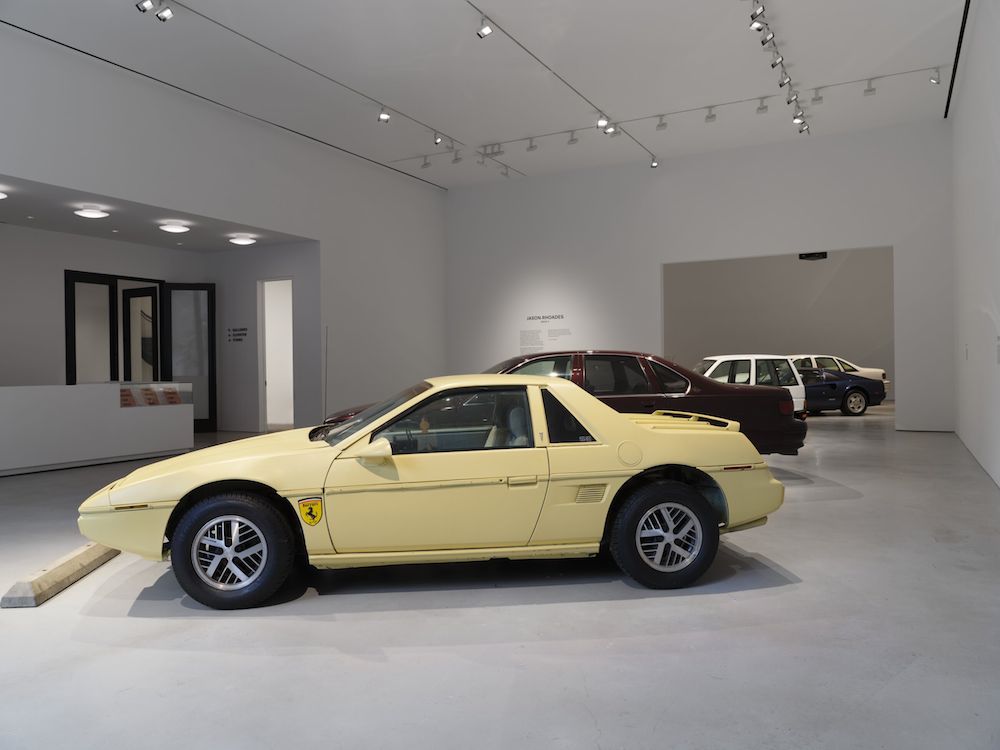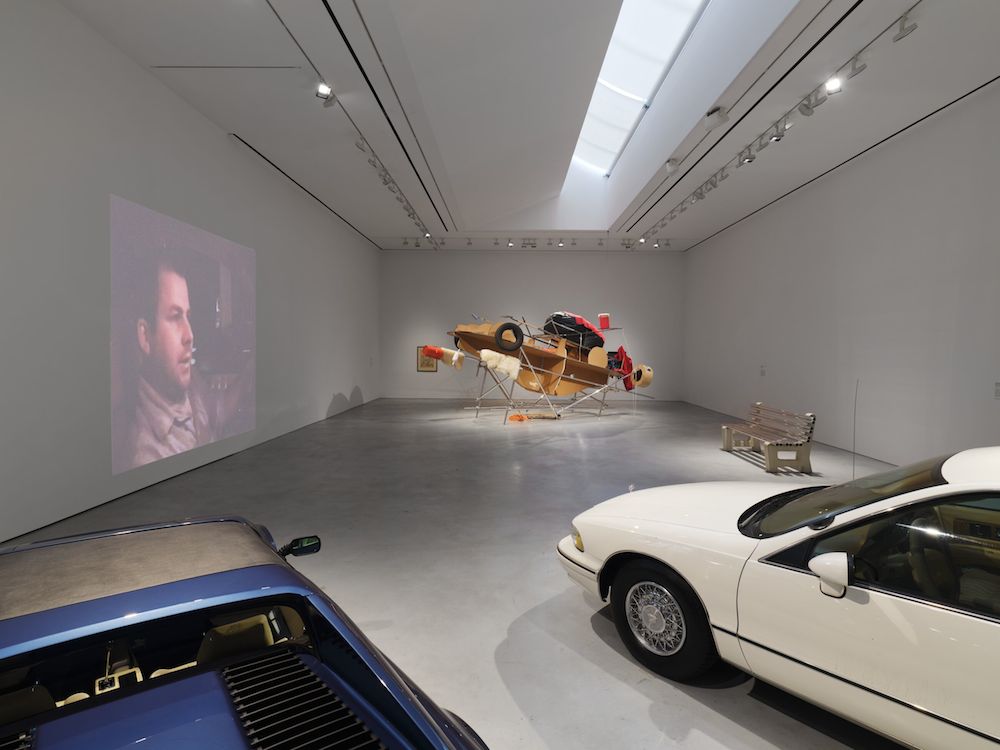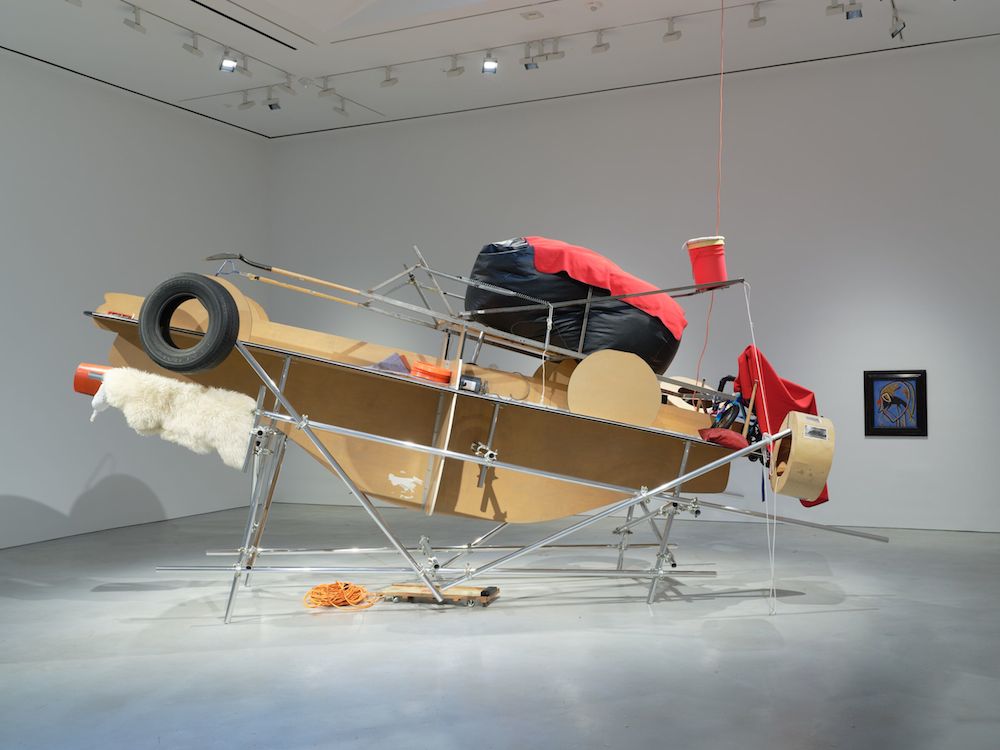For Jason Rhoades, the car was a vehicle of artistic pursuit and ambition. Hauser & Wirth New York presents a major exhibition of his ‘Car Projects,’ including a fleet of different makes of readymade car sculptures.
The installation will also feature a monumental work from 2000 named in tribute to the dada modernist and car collector Francis Picabia.
The exhibition will run concurrent to the yearlong exploration of Rhoades’ art and car culture taking place at Hauser & Wirth Downtown Los Angeles.
“I spend hours going to my studio, so I established this extension of my studio, or rather this second space, in my Caprice.”
Jason Rhoades (1965–2006) was renowned for the driving imagination and exuberance of his work, as well as, at times, its reckless provocation and overwhelming materiality. His epic-scaled installations established him as a force of the international art world in the 1990s while he was based in Los Angeles. Going with the storied flow of L.A. traffic, Rhoades considered the car an extension of the studio: a space in which the artist’s mind can race and wander. However, as a body of work, the ‘Car Projects’ have not been widely seen or considered within the scope of his art, in large part because the sculptures themselves have been in storage for decades, with one notable exception being the presentation of the ‘Caprice Auto Project’ in the 2022 Whitney Biennial, in which the 1992 Caprice was installed on the museum plaza as an outdoor sculpture.
This exhibition will be the first to present all five of Rhoades’ readymade car sculptures, starting with the ‘Yellow Fiero’ (1994).
Representing an American idea of a European sports car, the Pontiac Fiero was originally part of a massive 1994 installation, titled ‘Swedish Erotica and Fiero Parts,’ that transformed the Rosamund Felsen Gallery in Los Angeles into an ersatz IKEA entirely constructed by Rhoades.
The Fiero will be joined by a Chevrolet Caprice and Impala, a Ferrari 328 GTS and a Ligier microcar, all parked in the gallery alongside a video of Rhoades, driving around Los Angeles, fervidly discussing his ‘Car Projects.’
Recorded in a 1998 interview with the curator Hans Ulrich Obrist, Rhoades explains the relationship of cars to his art (parking is equated with situating a sculpture) and expounds on cars as icons of art history (Marcel Duchamp and Francis Picabia speeded modern art forward with their mechanized abstractions; postmodernism put on the brakes) as well as of aspiration and class (you are what you drive). The radio is tuned to Power 106 FM and as the world streams by to the propulsive hip-hop beat, the romance of cars seems irresistible.
“By going between places, [the car] will generate things. It’ll snowball, take on a mythology and a history, and then at some point it’ll just stop. And that’ll be it, it’ll be a finished sculpture.”
The uncanny spectacle of five cars in a gallery will be augmented by the bestial display of ‘Fucking Picabia Cars with Ejection Seat’ (1997/2000).
Assembled like an adult tinker-toy, from aluminum poles, plywood cutouts, plastic buckets, porn and other materials, a pair of automotive silhouettes appear conjoined and suspended high in the air. Per Rhoades’ specifications, the sculpture will be shown alongside work by Francis Picabia, an artist Rhoades revered for his systematic refusal to be contained or categorized, as well as for his passion for cars. Picabia raced and collected high-powered automobiles.
As an artist, Rhoades was keenly attuned to sources of cultural power and weakness. With cartoon gusto, his ‘Car Projects’ make vivid connections to complex human realities, such as our inability to forgo the combustible engine and get past the car. Through its very provocation, Rhoades’ art is always taking us somewhere.
The exhibition Jason Rhoades. DRIVE II is on view until October 19, 2024 at Hauser & Wirth New York, located at 542 West 22nd Street in New York City.






